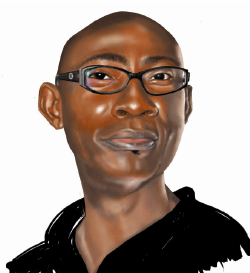When the Chief of Defence Staff, Air Chief Marshal Alex Badeh, announced a ceasefire with Boko Haram on Friday, October 17, many did not take him seriously. But to others, it was a welcome development.
To members of the #BringBackOurGirls campaign, a ceasefire strategy to end the insurgency in the North East was a model long suggested but ignored.
Advocates of ceasefire through negotiation believe that with the sophistication of insurgency and terrorism, sitting around a piece of mahogany was a sure way of obtaining commitment from the dramatis personae.
According to them, apart from the fact that the destruction inflicted on Nigerians by the insurgents is unbearable, the abduction on April 15 of more than 200 schoolgirls in Chibok calls for a meeting with Boko Haram members to assess their demands in the interest of peace and harmony.
Therefore, that Badeh announced a ceasefire agreement to pave the way for meetings with the insurgents was an elixir.
Government officials were very sure of the timeline for the release of the girls that they spoke about Monday or Tuesday, but were silent on the details.
Director General of the National Orientation Agency (NOA), Mike Omeri said: “Discussions will continue in Chad next week, and on the basis of those discussions we’ll have more details on how the girls will be released.”
However, it remains to be seen how the government has not dashed all the hope it raised, given that killings have continued in the North East and Boko Haram has not released the girls.
Perceptive minds are beginning to ask why it was only Abuja that had information on the ceasefire and how to restore peace while Boko Haram maintains a dignified silence on the reported truce.
Boko Haram’s sole means of conveying messages is videotaped speeches by a man claiming to be Abubakar Shekau. But up till now, no such leader or representative has said anything on the deal with the government, making the peaceful talks and ceasefire look suspicious.
Rather than getting details of a ceasefire, what the public got a few minutes after the announcement was another attack by gunmen the same Friday night and another on Saturday.
On Friday night, insurgents attacked Abadam village, killing one person and ransacking homes, while the attack on Saturday morning in Dzur village took eight lives. Three other attacks in Adamawa State on Saturday morning led to the death of dozens of people.
Insurgents also carried out three attacks in small towns in a local government area in Michika that same morning.
“Dozens of people are being killed and houses are being burnt by the insurgents, so what is the meaning of the ceasefire government is talking about?” asked Adamu Kamale, an Adamawa State lawmaker.
Boko Haram continued its assault progressively on Monday at Pelachiroma village in Borno, attacking and killing scores of villagers and escaping unhurt. A resident, Ignatius Musa, said the attack was carried out at noon while the caretaker Chairman of Hawul Council, Andrew Malgwi, confirmed that houses were destroyed.
But the government doubted whether these attacks were really carried out by Boko Haram or other criminal groups exploiting the chaos of insurgency.
To say that the fresh attacks dash the hopes for an early end to the Boko Haram challenge and the release of the abducted girls is shocking is to say the least.
On Wednesday, October 22, up to 60 women were abducted from Waga Mangoro and Garta villages in Madagali Council of Adamawa and five people were killed in Bauchi when the insurgents planted a bomb in a public place.
The situation got out of hand that the Chairman of Madagali Council in Adamawa State, James Watharda, had to relocate to Yola.
Watharda spoke after one of the locals in Garta, Tizshe Kwada, said “the insurgents are still in the area. They slit the throats of three men in Garta and abducted many young women. We also heard from residents of Waga that they killed two men and took 40 women away.”
Also on Wednesday, October 22, the terror sect laid ambush on a Borno highway, killing a Nigerian soldier.
The intensity of the attacks by Boko Haram in the North East, even after the said ceasefire, raises fundamental questions on the preparedness of the military to rise up to the fresh challenge of catching up with the sect in the areas it has used the temporary ceasefire to gain advantage.
The ceasefire pact was dead on arrival. If there was a ceasefire agreement in the first place, it was bought into by the sect as a decoy to enable its members return to the drawing board, garner more strength for a bigger battle.
We hope Badeh and his military colleagues will swallow their pride over this failed ceasefire strategy with Boko Haram and refuse to be drawn into such nonsense a second time.
Nigerians are still interested in seeing our abducted girls rescued. We want to be sure of who and who are with the girls, where they are kept and who is keeping them, and not the characters we are said to be talking with in Chad.
As Borno Elders Forum (BEF) spokesman, Bulama Mali Gubio, pointed out during the week, “it is either (that) those the federal government is negotiating with are not Boko Haram (members) but the usual impostors … or it is just some kind of mockery.
“If the federal government does not know who the real Boko Haram (members) are, I think they should come here to find out from us. The real Boko Haram who are killing us, who are burning our towns and villages, are not the Boko Haram that a peace deal was reached with.”
Of course, a group led by Danladi Ahmadu was at the talks.
Reuters quoted one government official as saying: “We are negotiating with considerable caution. Boko Haram has grown into such an amorphous entity that any splinter group could come up disowning the deal. (But) we believe we are talking to the right people.”












